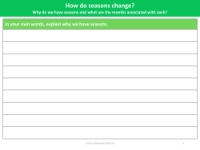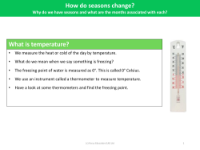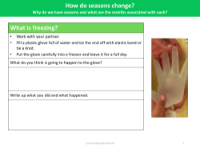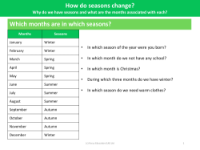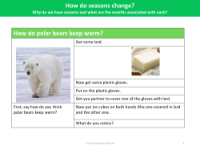Why do we have seasons and what are the months associated with each? - Teacher's Notes
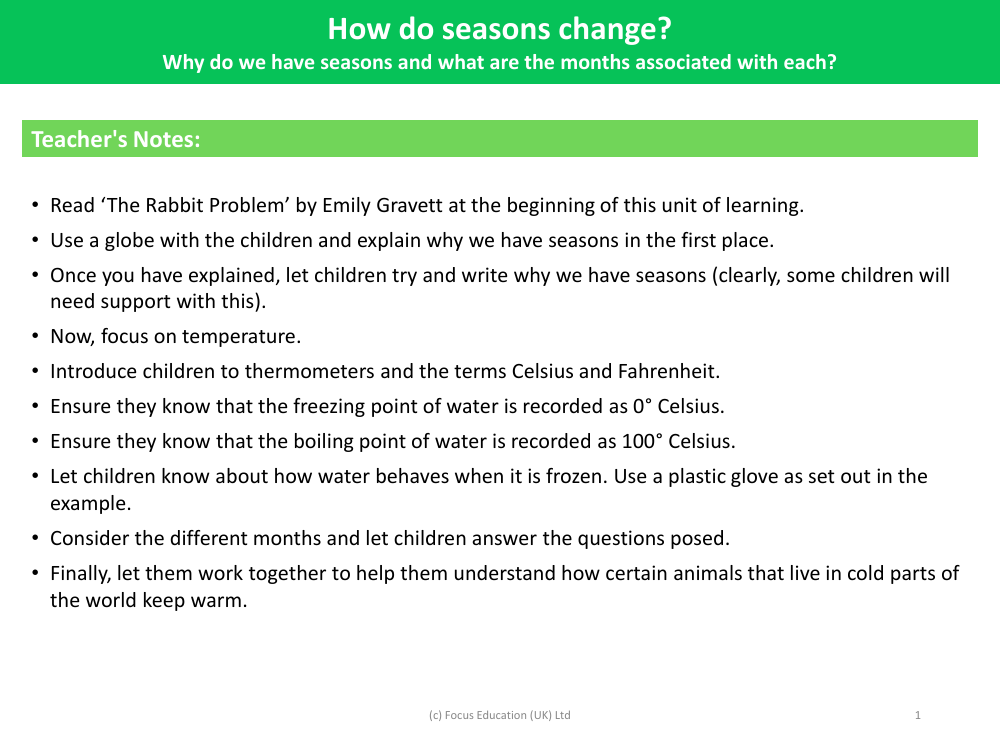
Science Resource Description
The changing of seasons is a fundamental aspect of Earth's natural environment, driven by the planet's axial tilt and its orbit around the Sun. To help children grasp this concept, teachers can begin by reading 'The Rabbit Problem' by Emily Gravett, which serves as an engaging introduction to a unit on seasons. Utilising a globe, educators can visually demonstrate why we experience different seasons, explaining the tilt of the Earth and how it affects the intensity and duration of sunlight in various parts of the world throughout the year. This explanation sets the foundation for children to attempt writing their own understanding of why we have seasons, with some requiring additional support in articulating the concept.
Focus then shifts to temperature as a key indicator of seasonal change. Children are introduced to thermometers and the temperature scales of Celsius and Fahrenheit, learning the significant points of 0° Celsius for the freezing point of water and 100° Celsius for its boiling point. An experiment using a plastic glove can illustrate the properties of water when it transitions into ice. Discussion of the different months of the year and their associated seasons encourages children to engage with the cyclical pattern of seasonal weather. The lesson culminates with a collaborative activity, where children explore the adaptations of animals in cold climates, enhancing their understanding of how living organisms respond to seasonal temperature changes.


